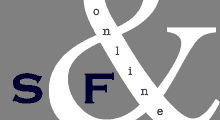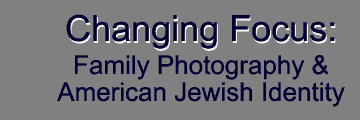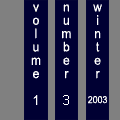Notes:
1. Also to be included here is the work of photographer Larry Sultan. I wrote about the less overt Jewishness of that work in Laura Levitt, "Photographing American Jews: Identifying American Jewish Life," in Laurence Silberstein, ed. Mapping Jewish Identities, (New York: New York University Press, 2000), 65-96.
2. Marianne Hirsch, ed., The Familial Gaze, (Hanover: University Press of New England, 1999).
3. Carol Mavor, Pleasures Taken: Performances of Sexuality and Loss in Victorian Photographs (Durham: Duke University Press, 1995), Chapter Two, "To Make Mary: Julia Margaret Cameron's Photographs of Altered Madonnas," 43-70.
4. Mavor, Pleasures Taken, 46.
5. "A great entertainer, Cameron regularly invited famous people to her house, from Alfred Lord Tennyson to Lewis Carroll and Charles Darwin." Mavor, Pleasures Taken, 45.
6. Through these images, Hillier became known as the "Island Madonna" by the local people who lived near Cameron's house. Mavor, Pleasures Taken, 43.
8. Some of those in attendance were close friends and/or partners. These included Jane Gallop and Dick Blau, Marianne Hirsch and Leo Spitzer, Mieke Bal and Ernst van Alphen as well as long time feminist friends and colleagues, Elizabeth Abel, Nancy K. Miller, Jane Gallop and Marianne Hirsch. Particularly noteworthy at the conference were interactions among and between Gallop, Miller and Hirsch. For an earlier exploration of these intimate and critical interactions, see Jane Gallop, Marianne Hirsch, and Nancy K. Miller "Criticizing Feminist Criticism," in Conflicts in Feminism, Marianne Hirsch and Evelyn Fox Keller ed., (New York: Routledge, 1990), 349-369. Also in that volume is a powerful essay by Elizabeth Abel that connects back to the themes of her essay in this volume, "Race, Class, and Psychoanalysis? Opening Questions," Conflicts in Feminism, 184-204. I would also like to note that Marianne Hirsch's parents and two of Joanne Leonard's sisters, Barbara Handelman and Eleanor Rubin, also attended the conference and were a part of these discussions.
9. Marianne Hirsch, The Mother/Daughter Plot: Narrative, Psychoanalysis, Feminism (Bloomington: Indiana University Press, 1989).
10. See Hirsch's Family Frames. The chapter "Pictures of a Displaced Girlhood," is an expanded version of her essay by this same title first included in Angelika Bammer ed., Displacements: Cultural Identities in Question, (Bloomington: Indiana University Press, 1994), 71-89. This early publication of the essay along with the haunting photograph on the cover of her Mother/Daughter Plot offers readers glimpses into Hirsch's ongoing interest and fascination with intimate looking and family photographs.










